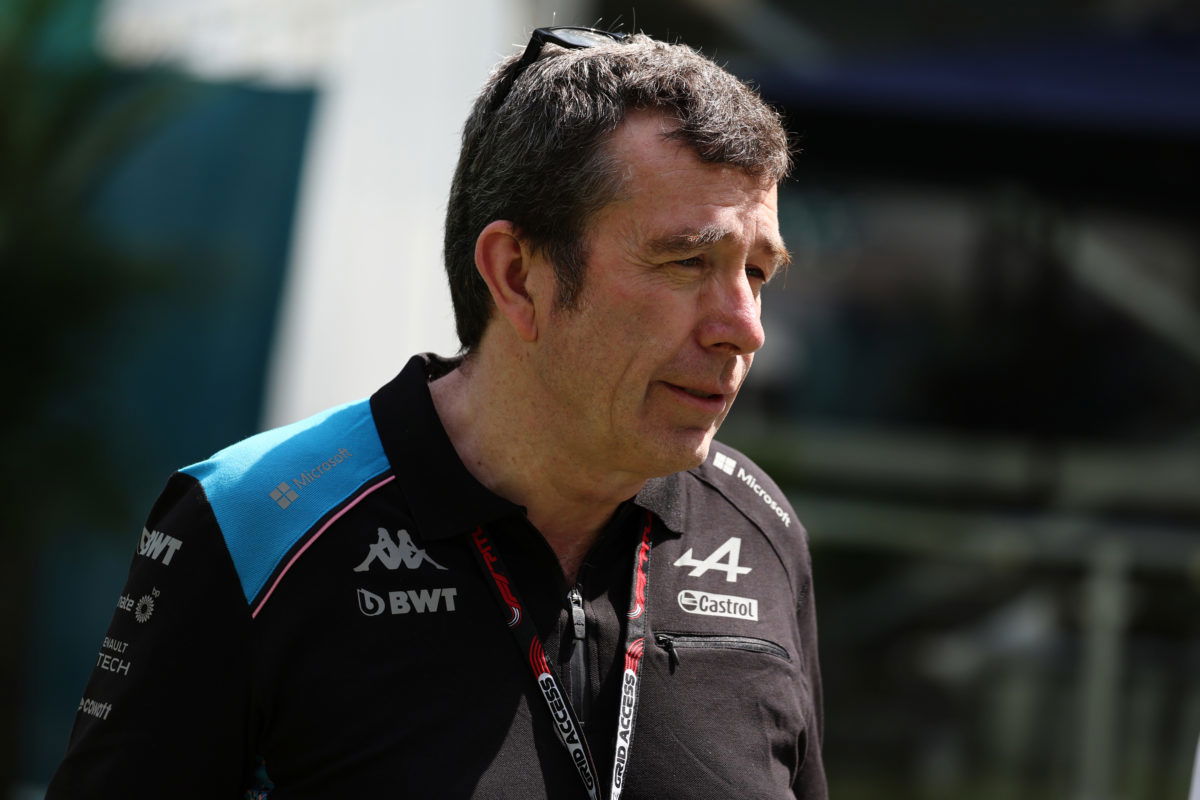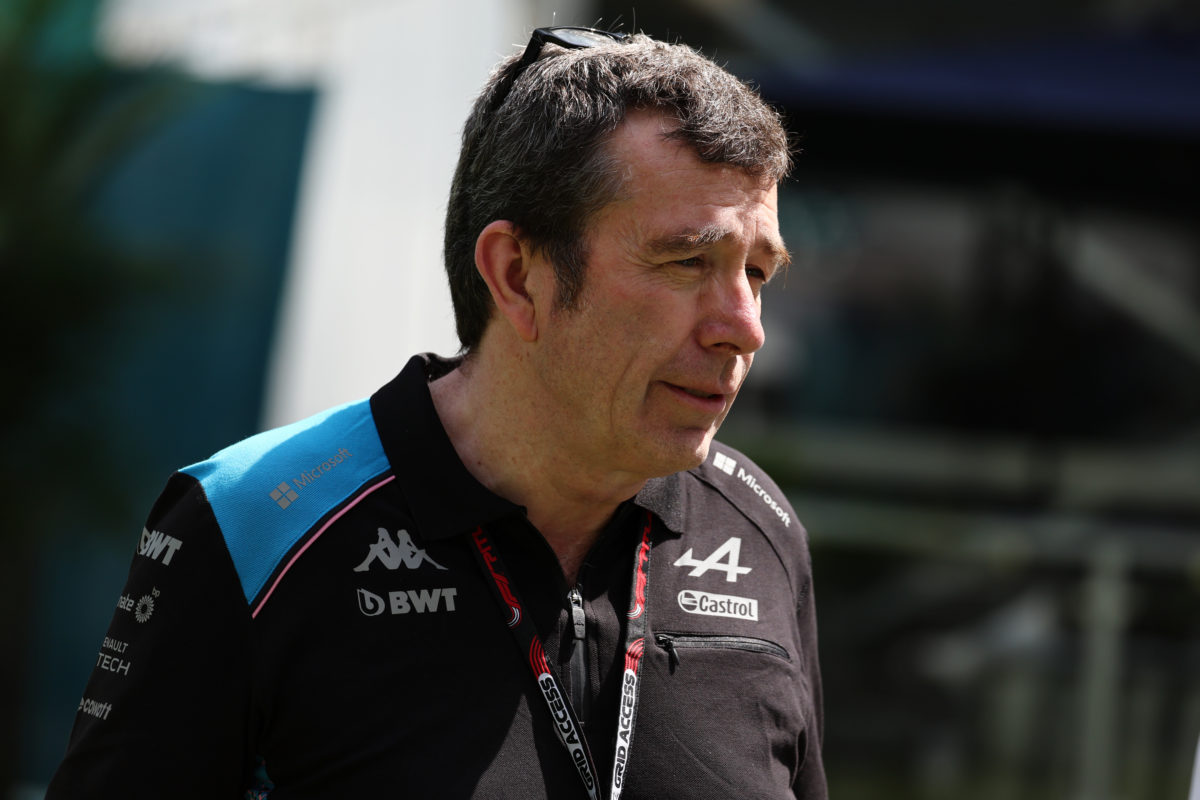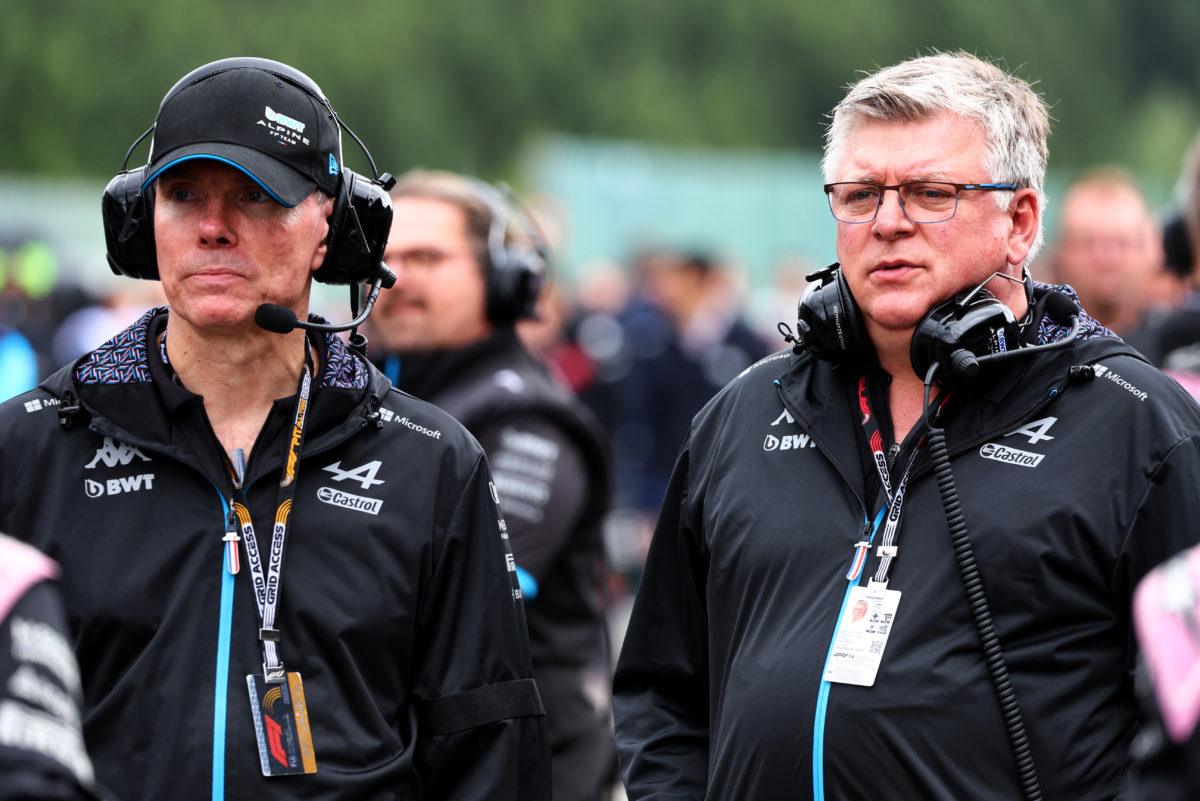

According to interim team principal Bruno Famin, Alpine has a plan. Trying to ascertain exactly what that plan is, however, is another matter.
Alpine stunned Formula 1 on the Friday of the Belgian Grand Prix weekend when it announced Otmar Szafnauer and Alan Permane would be leaving their roles as team principal and sporting director respectively. Chief technical officer Pat Fry was also confirmed as another departee, with the veteran due to take up the same role with Williams from November 1.
There have been numerous changes behind the scenes over the two-and-a-half-year period since Renault rebranded as Alpine, as our timeline here shows. The decision to part ways with a trio of such vast F1 experience, however, appeared reckless, even by the measure of what has previously transpired.
In fairness, Famin has considerable motorsport experience, particularly with Peugeot in sportscars, and then as deputy secretary-general for sport with the FIA.
That precluded his appointment as executive director with Alpine, in charge of the development of the power unit, joining at the same time as Szafnauer became the new team principal just 18 months ago.
Now, the Frenchman has taken on the role of team boss, even if only for a short period whilst Alpine attempts to find another way to execute its plan, although he has not ruled himself out of the equation entirely. Former Ferrari team boss Mattia Binotto is the favourite to succeed Szafnauer.
As to the plan, it is hard to shed any light as Famin obfuscated, often speaking in generalisms rather than specifics when pressed on the matter during a select media session, that included Speedcafe, following his FIA press conference appearance that followed the bombshell announcement.
“Alpine has a plan, and we really want to develop that plan, mainly to broadcast (the brand) because that is the business,” remarked Famin. “For that, the strategy of the brand is to be based on motorsport programmes, with Formula 1 being the main one, of course.
“The goal is really to push the development of the brand. To do that, one of the things we need to do is to push the development of the Formula 1 team.”
Asked by Speedcafe to clarify exactly the nature of “the plan”, again, the subject was primarily avoided.
“The idea is to add a new step in our project, to develop the mindset, the facilities, everything in order to be able to get better results from race to race, from one year to another,” said Famin. Any the wiser? Nope, neither were we.
When it came to the reasoning behind axing Szafnauer and Permane, although apparently, they departed via mutual consent, Famin would only go so far as to say their timeline to success differed from that of the senior management, led by Renault Group CEO Luca de Meo.
Former Alpine F1 CEO Laurent Rossi, recently shunted into an undefined ‘special projects’ assignment, made a rod for the team’s back when he announced late in 2021 a 100-race pathway to success, one that is effectively a third of the way through, and with the team seemingly no nearer the front than when it embarked on its grandiose idea.

Szafnauer and Permane, given their experience, realised the team was never going to hit the ambitious targets set in 100 races, and when they aired their concerns, it went against the grain of what was being asked, and so it was determined they were no longer required.
“The main reason we mutually decided to split our route is because we are not on the same line,” said Famin. “Timeline is one of the reasons, and that’s it.”
Asked whether he felt he could make Alpine more competitive faster than planned by Szafnauer and Permane, one of the most knowledgeable and highly respected figures in F1 given his 34 years’ service at Enstone through its various guises, Famin simply replied: “Yeah.”
As to how he would do that, he said: “We need to change quite a lot of things in our project.
“The first thing I will do is an assessment of what is the full situation of the team, on the factories, on the way the factories are working together, on everything, and once the assessment will be done, we will take the corresponding decision.”
The problem is, however, such an assessment is not the work of a moment, nor will be executing what Famin ultimately devises. If time is of the essence, much will be wasted in undoing Szafnauer’s 18 months of effort following his arrival in February last year.
Famin, though, dismissed the suggestion that stability, rather than even more upheaval, was a more preferable route to follow.
“Stability can also be a way of always having the same results in the same way and not progressing,” he retorted.
“We should have been much closer to the top teams this season, and for sure, things should have been different.
“But in terms of stability, we need to build things. Now we need to make some changes to move forward, to go faster, and to change this stability, which is quite counterproductive at this stage.”
Another factor that appears to have been glossed over is that Alpine is almost fighting with one hand behind its back following the discovery its power unit is lagging in performance compared to rivals Mercedes, Ferrari, and Honda, the latter still supporting Red Bull.
Alpine has been seeking approval from the other manufacturers to address the current performance imbalance, which is proving problematic given we are in an era when the PU regulations are frozen.
Following a meeting last week in Spa of the Formula 1 Commission, it was mentioned there was ‘sympathy’ for Alpine’s plight but with no solution conveyed as to how best to tackle its problem.
“The power unit is not the best one,” said Famin, given his work over the past 18 months in this area. “Okay, we are a bit down, that’s a fact.
“The problem is the engine is in a frozen period, and we cannot develop the performance of the engine. The topic was brought to the Formula 1 Commission by the FIA to see if it is possible to do something, in line with what was agreed when it was decided to freeze the engine two years ago.
“Overall, we need to work on the package. We cannot work on the performance of the engine, but we can work on the package, and with the experience hired now in Viry (Alpine’s PU base), and with my new position, I think we will be able to improve that.”
It is a bold statement when you consider Alpine does not have the best engine, let one of the sport’s best drivers in Fernando Alonso leave last season, as well as rising star Oscar Piastri, and then decided to get rid of its team principal and sporting director, whilst also allowing its technical chief to depart.
In terms of the 100-race plan to be regularly winning races by the end of 2026, and given the state of Alpine after 34 of those, it appears Famin has his work cut out. His plan, whatever it is, better be a good one.






















Discussion about this post